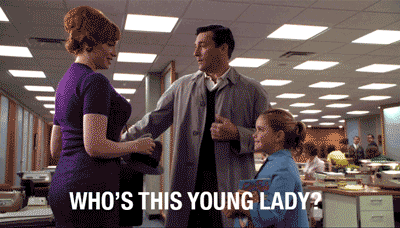THOUGHTS FOR MANAGING A CREATIVE CULTURE
Here are some of the principles we’ve developed over the years to enable and protect a healthy creative culture. I know that when you distill a complex idea into a T-shirt slogan, you risk giving the illusion of understanding—and, in the process, of sapping the idea of its power. An adage worth repeating is also halfway to being irrelevant. You end up with something that is easy to say but not connected to behavior. But while I have been dismissive of reductive truths throughout this book, I do have a point of view, and I thought it might be helpful to share some of the principles that I hold most dear here with you. The trick is to think of each statement as a starting point, as a prompt toward deeper inquiry, and not as a conclusion.
• Give a good idea to a mediocre team, and they will screw it up. Give a mediocre idea to a great team, and they will either fix it or come up with something better. If you get the team right, chances are that they’ll get the ideas right.
• When looking to hire people, give their potential to grow more weight than their current skill level. What they will be capable of tomorrow is more important than what they can do today.
• Always try to hire people who are smarter than you. Always take a chance on better, even if it seems like a potential threat.
• If there are people in your organization who feel they are not free to suggest ideas, you lose. Do not discount ideas from unexpected sources. Inspiration can, and does, come from anywhere.
• It isn’t enough merely to be open to ideas from others. Engaging the collective brainpower of the people you work with is an active, ongoing process. As a manager, you must coax ideas out of your staff and constantly push them to contribute.
• There are many valid reasons why people aren’t candid with one another in a work environment. Your job is to search for those reasons and then address them.
• Likewise, if someone disagrees with you, there is a reason. Our first job is to understand the reasoning behind their conclusions.
• Further, if there is fear in an organization, there is a reason for it—our job is (a) to find what’s causing it, (b) to understand it, and (c) to try to root it out.
• There is nothing quite as effective, when it comes to shutting down alternative viewpoints, as being convinced you are right.
• In general, people are hesitant to say things that might rock the boat. Braintrust meetings, dailies, postmortems, and Notes Day are all efforts to reinforce the idea that it is okay to express yourself. All are mechanisms of self-assessment that seek to uncover what’s real.
• If there is more truth in the hallways than in meetings, you have a problem.
• Many managers feel that if they are not notified about problems before others are or if they are surprised in a meeting, then that is a sign of disrespect. Get over it.
• Careful “messaging” to downplay problems makes you appear to be lying, deluded, ignorant, or uncaring. Sharing problems is an act of inclusion that makes employees feel invested in the larger enterprise.
• The first conclusions we draw from our successes and failures are typically wrong. Measuring the outcome without evaluating the process is deceiving.
• Do not fall for the illusion that by preventing errors, you won’t have errors to fix. The truth is, the cost of preventing errors is often far greater than the cost of fixing them.
• Change and uncertainty are part of life. Our job is not to resist them but to build the capability to recover when unexpected events occur. If you don’t always try to uncover what is unseen and understand its nature, you will be ill prepared to lead.
• Similarly, it is not the manager’s job to prevent risks. It is the manager’s job to make it safe to take them.
• Failure isn’t a necessary evil. In fact, it isn’t evil at all. It is a necessary consequence of doing something new.
• Trust doesn’t mean that you trust that someone won’t screw up—it means you trust them even when they do screw up.
• The people ultimately responsible for implementing a plan must be empowered to make decisions when things go wrong, even before getting approval. Finding and fixing problems is everybody’s job. Anyone should be able to stop the production line.
• The desire for everything to run smoothly is a false goal—it leads to measuring people by the mistakes they make rather than by their ability to solve problems.
• Don’t wait for things to be perfect before you share them with others. Show early and show often. It’ll be pretty when we get there, but it won’t be pretty along the way. And that’s as it should be.
• A company’s communication structure should not mirror its organizational structure. Everybody should be able to talk to anybody.
• Be wary of making too many rules. Rules can simplify life for managers, but they can be demeaning to the 95 percent who behave well. Don’t create rules to rein in the other 5 percent—address abuses of common sense individually. This is more work but ultimately healthier.
• Imposing limits can encourage a creative response. Excellent work can emerge from uncomfortable or seemingly untenable circumstances.
• Engaging with exceptionally hard problems forces us to think differently.
• An organization, as a whole, is more conservative and resistant to change than the individuals who comprise it. Do not assume that general agreement will lead to change—it takes substantial energy to move a group, even when all are on board.
• The healthiest organizations are made up of departments whose agendas differ but whose goals are interdependent. If one agenda wins, we all lose.
• Our job as managers in creative environments is to protect new ideas from those who don’t understand that in order for greatness to emerge, there must be phases of not-so-greatness. Protect the future, not the past.
• New crises are not always lamentable—they test and demonstrate a company’s values. The process of problem-solving often bonds people together and keeps the culture in the present.
• Excellence, quality, and good should be earned words, attributed by others to us, not proclaimed by us about ourselves.
• Do not accidentally make stability a goal. Balance is more important than stability.
• Don’t confuse the process with the goal. Working on our processes to make them better, easier, and more efficient is an indispensable activity and something we should continually work on—but it is not the goal. Making the product great is the goal.
- Brad has told me that he thinks of directing the way he thinks about skiing. In either pursuit, he says, if he tightens up or thinks too much, he crashes. There are moments, as a director, where there is so much work to do and so little time to do it that he can’t help but feel fear. But he also knows that if he lingers too long in that frightened place, he will freak out. “So I tell myself that I have time, even when I don’t. As in, ‘Okay, I’m going to proceed as if I have time—I’m going to sit back and muse rather than looking at the clock—because if I sit back and muse, I’m more likely to solve the problem.’ ” This is where directing is a lot like skiing. “I like to go fast,” Brad says, before launching into a story about a trip he took to Vail when, “in the course of a week, I cracked the lens of my goggles four times. Four times I had to go to the ski store and say, ‘I need a new piece of plastic,’ because I had shattered it crashing into something. And at some point, I realized that I was crashing because I was trying so hard not to crash. So I relaxed and told myself, ‘It’s going to be scary when I make the turns really fast, but I’m going to push that mountain away and enjoy it.’ When I adopted this positive attitude, I stopped crashing. In some ways, it’s probably like an Olympic athlete who’s spent years training for one moment when they can’t make a mistake. If they start thinking too much about that, they’ll be unable to do what they know how to do.”
- Athletes and musicians often refer to being in “the zone”—that mystical place where their inner critic is silenced and they completely inhabit the moment, where the thinking is clear and the motions are precise. Often, mental models help get them there. Just as George Lucas liked to imagine his company as a wagon train headed west—its passengers full of purpose, part of a team, unwavering in their pursuit of their destination—the coping mechanisms used by Pixar and Disney Animation’s directors, producers, and writers draw heavily on visualization. By imagining their problems as familiar pictures, they are able to keep their wits about them
- As John often says, “Art challenges technology, technology inspires art.”
Culture
- In an unhealthy culture, each group believes that if their objectives trump the goals of the other groups, the company will be better off. In a healthy culture, all constituencies recognize the importance of balancing competing desires—they want to be heard, but they don’t have to win. Their interaction with one another—the push and pull that occurs naturally when talented people are given clear goals—yields the balance we seek. But that only happens if they understand that achieving balance is a central goal of the company.
- While the idea of balance always sounds good, it doesn’t capture the dynamic nature of what it means to actually achieve balance. Our mental image of balance is somewhat distorted because we tend to equate it with stillness—the calm repose of a yogi balancing on one leg, a state without apparent motion. To my mind, the more accurate examples of balance come from sports, such as when a basketball player spins around a defender, a running back bursts through the line of scrimmage, or a surfer catches a wave. All of these are extremely dynamic responses to rapidly changing environments. In the context of animation, directors have told me that they see their engagement when making a film as extremely active. “It seems like it’s good psychologically to expect these movies to be troublesome,” Byron Howard, one of our directors at Disney, told me. “It’s like someone saying, ‘Here, take care of this tiger, but watch your butt, they’re tricky.’ I feel like my butt is safer when I
Problems
- While problems in a film are fairly easy to identify, the sources of those problems are often extraordinarily difficult to assess. A mystifying plot twist or a less-than-credible change of heart in our main character is often caused by subtle, underlying issues elsewhere in the story. Think of it like a patient complaining of knee pain that stems from his fallen arches. If you operated on the knee, it wouldn’t just fail to alleviate the pain, it could easily compound it. To alleviate the pain, you have to identify and deal with the root of the problem. The Braintrust’s notes, then, are intended to bring the true causes of problems to the surface—not to demand a specific remedy.




